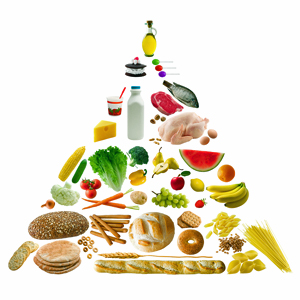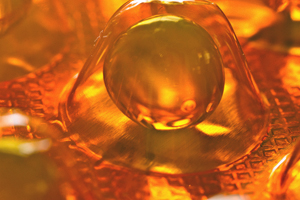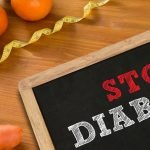As I’ve said many times before, I’m not a big fan of calcium supplementation for most people, and I have repeatedly pointed out the dangers of too much calcium. Although a necessary nutrient, it doesn’t perform as promised when taken in large amounts for bone health, and a number of studies now indicate that it may be problematic when it comes to heart health. In summary, there is an ever growing amount of research that shows that a high consumption of supplemental calcium leads to heart disease, arthritis, disabling PMS, and senility. And although high levels of dietary calcium may be exempt from the heart disease warning according to several new studies, it’s still highly suspect when it comes to bone health.
The Evidence Against Calcium Has Been Building
It has been gospel for years in both the medical and alternative health communities that consumption of calcium-rich foods and calcium supplements can help prevent the loss of bone density and osteoporosis, especially in postmenopausal women. As a result, calcium supplements are widely recommended and used to combat estrogen- and age-related declines in bone mineral density. In fact, supplemental calcium has been added to all kinds of foods that you would think have nothing to do with calcium–ranging from orange juice to SpaghettiOs. No joke: SpaghettiOs has a Plus Calcium version.1 http://www.amazon.com/Campbells-SpaghettiOs-Plus-Calcium-15/dp/B0004N07G0 And although there have actually been a few studies over the years that seemed to indicate that supplemental calcium might actually reduce cardiovascular disease, the opposite now appears to be true. The evidence concerning the dangers of calcium supplements has been building for years–first slowly, but now accelerating.
Although researchers are not exactly sure how it does it, ever mounting data indicates that high calcium intake does indeed increase the risk of heart attacks and death. We can probably find a clue in the fact that calcification accelerates hardening of the arteries and the likelihood of death in patients with failing kidneys and that using calcium supplements accelerates it even more.2 Russo D, Miranda I, Ruocco C, et al. “The progression of coronary artery calcification in predialysis patients on calcium carbonate or sevelamer.” Kidney Int. 2007;72:1255-1261. http://www.ncbi.nlm.nih.gov/pubmed/17805238 ,3 Goodman WG, Goldin J, Kuizon BD, et al. “Coronary-artery calcification in young adults with end-stage renal disease who are undergoing dialysis.” N Engl J Med. 2000;342:1478-1483. http://www.nejm.org/doi/pdf/10.1056/NEJM200005183422003 It’s not hard to extrapolate that evidence to see how increased vascular calcification as triggered by calcium supplementation, especially within coronary arteries, would be expected to increase the incidence of cardiovascular disease.
As already mentioned, there have been a number of studies over the years that have found that calcium supplementation is associated with upward trends in cardiovascular event rates, particularly in healthy postmenopausal women.4 Bolland MJ, Barber PA, Doughty RN, et al. Vascular events in healthy older women receiving calcium supplementation: randomised controlled trial. BMJ. 2008;336:262-266. http://www.bmj.com/content/336/7638/262 But probably the first “major” crack in the calcium myth, at least in the medical community, was the European Prospective Investigation into Cancer and Nutrition (EPIC-Heidelberg) study published in 2010.5 Li K, Kaaks R, Linseisen J, Rohrmann S. Associations of dietary calcium intake and calcium supplementation with myocardial infarction and stroke risk and overall cardiovascular mortality in the Heidelberg cohort of the European Prospective Investigation into Cancer and Nutrition study (EPIC-Heidelberg). Heart. 2012;98:920-925. http://heart.bmj.com/content/98/12/920.full.pdf+html The specific objective of the study was to “prospectively evaluate the associations of dietary calcium intake and calcium supplementation with MI [myocardial infarction, i.e. heart attacks] and stroke risk and overall CVD [cardiovascular disease] mortality.” As the study pointed out in its background statement, “It has been suggested that a higher calcium intake might favourably modify cardiovascular risk factors. However, findings of an ultimately decreased risk of cardiovascular disease (CVD) are limited. Instead, recent evidence warns that taking calcium supplements might increase myocardial infarction (MI) risk.” The specific objective of the study, then, was to “evaluate the associations of dietary calcium intake and calcium supplementation with MI and stroke risk and overall CVD mortality.”
 As the researchers explained, and as I mentioned earlier, previous epidemiological studies have consistently reported an inverse association between dietary calcium intake and the risk of hypertension, obesity, and type 2 diabetes. In other words, until the last few years, most studies suggested that a reasonably higher intake of calcium might ultimately decrease the occurrence of cardiovascular events. The EPIC study, however, came to a more disturbing conclusion. It found that in comparison with non-users of any supplements, users of calcium supplements had a statistically significant increased risk of having a heart attack, which was more pronounced for calcium supplement only users. As stated in the study’s conclusion, the researchers suggested that increasing calcium intake from diet likely did not confer significant cardiovascular benefits, while calcium supplements, likely raised the risk of having a heart attack.
As the researchers explained, and as I mentioned earlier, previous epidemiological studies have consistently reported an inverse association between dietary calcium intake and the risk of hypertension, obesity, and type 2 diabetes. In other words, until the last few years, most studies suggested that a reasonably higher intake of calcium might ultimately decrease the occurrence of cardiovascular events. The EPIC study, however, came to a more disturbing conclusion. It found that in comparison with non-users of any supplements, users of calcium supplements had a statistically significant increased risk of having a heart attack, which was more pronounced for calcium supplement only users. As stated in the study’s conclusion, the researchers suggested that increasing calcium intake from diet likely did not confer significant cardiovascular benefits, while calcium supplements, likely raised the risk of having a heart attack.
That was strong stuff, and the ante was raised by two new studies published this year!
A Swedish cohort study established in the late 1980’s set out to investigate the association between long term intake of dietary and supplemental calcium and death from all causes and cardiovascular disease. After following the 61,433 women for 19 years, the results of the study were published this February.6 Karl Michaëlsson, Håkan Melhus, Eva Warensjö Lemming, et al. “Long term calcium intake and rates of all cause and cardiovascular mortality: community based prospective longitudinal cohort study.” BMJ 2013; 346. http://www.bmj.com/content/346/bmj.f228.pdf%2Bhtml Average total cumulative calcium intake (dietary plus supplemental) for the participants in the study ranged from 572 mg/day to 2137 mg/day. The study found that high intakes of calcium in women are indeed associated with higher death rates from all causes including cardiovascular disease…but not from stroke. Specifically, they found that among calcium tablet users with a dietary calcium intake above 1400 mg/day the hazard ratio for all cause mortality was 2.57 times the norm. To translate this into English, your risk of dying, if you’re a woman, more than doubles if you take calcium supplements and have a high total calcium intake. That said, the researchers indicated that they believed that the study results suggest that supplements, rather than dietary calcium, are the problem. (As we will discuss later, this does not necessarily give a free pass to consuming high levels of dairy calcium.) Dr. Michaëlsson, the study’s lead author, also noted that since a meta-analysis of randomized trials has shown that calcium supplementation actually increases the rate of hip fracture, “My present recommendation is to avoid calcium supplement use if you have a normal varied diet.”
A second study, also published in February, but in the Journal of the American Medical Association, Internal Medicine, came to a similar conclusion, but with a twist.7 Xiao Q, Murphy RA, Houston DK, Harris TB, Chow WH, Park Y. Dietary and supplemental calcium intake and cardiovascular disease mortality. JAMA Intern Med. 2013;173(8):639-646. http://archinte.jamanetwork.com/article.aspx?articleid=1568523 The premise of the study was that “scant evidence supports the notion that calcium supplements alone significantly decrease the risk for osteoporotic fracture, yet these supplements remain one of the most popular treatments taken by adults in the United States. In addition, there is increasing evidence that calcium may contribute to a higher risk for cardiovascular disease (CVD).” This study, then, used a large cohort of adults to examine how dietary calcium and calcium supplements affect the risk for CVD among women and men.
This study tracked 388,229 men and women aged 50 to 71 years who had participated in the National Institutes of Health–AARP Diet and Health Study. The twist? This study found that a high intake of supplemental calcium is associated with an excess risk of CVD death in men… but not in women. (Pretty much the mirror image of the Swedish study we just cited, but still a negative for calcium supplements.) Specifically, the study found that men who consumed 1000 mg or more of supplemental calcium per day had a significant 20% increased risk of cardiovascular disease death, a risk that was driven by a significant 19% increased risk of heart-disease death. For women, however, there was no association between calcium intake and the risk of death.
Now, to be sure, there have been a number of significant studies over the years that have pointed to the safety of calcium supplementation. For example, an early reading of the data from the Women’s Health Initiative initially pointed to a lack of effect of calcium supplements on the risk for cardiovascular events.8 Hsia J, Heiss G, Ren H, et al; “Women’s Health Initiative Investigators. Calcium/vitamin D supplementation and cardiovascular events.” Circulation. 2007;115:846-854. http://www.jhsph.edu/sebin/q/z/4_10_07.pdf However, subsequent analysis of the same data did indeed find that calcium supplements significantly increased the risk for these events, particularly heart attacks.9 Bolland MJ, Grey A, Avenell A, Gamble GD, Reid IR. “Calcium supplements with or without vitamin D and risk of cardiovascular events: reanalysis of the Women’s Health Initiative limited access dataset and meta-analysis.” BMJ. 2011;342:d2040. http://www.ncbi.nlm.nih.gov/pmc/articles/PMC3079822 And in a meta-analysis, the use of calcium supplements VS placebo was associated with a modest increase in heart attacks.10 Bolland MJ, Avenell A, Baron JA, et al. “Effect of calcium supplements on risk of myocardial infarction and cardiovascular events: meta-analysis.” BMJ. 2010;341:c3691. http://www.bmj.com/highwire/filestream/384420/field_highwire_article_pdf/0/bmj.c3691.full.pdf In the end, the evidence keeps pointing back to an increased risk.
Calcium and Bone Health
The JAMA, Internal Medicine study cited above, asked a key question that’s worth taking a closer look at. It asked: what is the evidence in favor of supplement use in terms of bone health, particularly when it comes to calcium? It answered that question as follows:
 A meta-analysis of 29 studies found that calcium use alone was associated with a non-significant reduction in the risk for fracture.11 Tang BM, Eslick GD, Nowson C, Smith C, Bensoussan A. “Use of calcium or calcium in combination with vitamin D supplementation to prevent fractures and bone loss in people aged 50 years and older: a meta-analysis.” Lancet. 2007;370:657-666. http://www.ncbi.nlm.nih.gov/pubmed/17720017 (However, the use of calcium with vitamin D reduced the risk for fracture by 12%. Vitamin D alone at doses of 800 IU or more daily also significantly reduced the risk for fracture.)
A meta-analysis of 29 studies found that calcium use alone was associated with a non-significant reduction in the risk for fracture.11 Tang BM, Eslick GD, Nowson C, Smith C, Bensoussan A. “Use of calcium or calcium in combination with vitamin D supplementation to prevent fractures and bone loss in people aged 50 years and older: a meta-analysis.” Lancet. 2007;370:657-666. http://www.ncbi.nlm.nih.gov/pubmed/17720017 (However, the use of calcium with vitamin D reduced the risk for fracture by 12%. Vitamin D alone at doses of 800 IU or more daily also significantly reduced the risk for fracture.)- In another meta-analysis, total calcium intake did not alter the risk for hip or total non-vertebral fracture.12 Bischoff-Ferrari HA, Dawson-Hughes B, Baron JA, et al. “Calcium intake and hip fracture risk in men and women: a meta-analysis of prospective cohort studies and randomized controlled trials.” Am J Clin Nutr. 2007;86:1780-1790. http://ajcn.nutrition.org/content/86/6/1780.long More disturbing was the finding that calcium supplementation was associated with a higher risk for hip fracture compared with placebo.
In other words, despite the strong “belief” shared by many medical doctors (not to mention, many in the alternative health community) that calcium supplements protect your bones, the actual evidence in support of that belief is thin at best. That makes concerns about calcium’s apparent tendency to promote cardiovascular problems that much more disturbing. Now you’re talking about significant risk in return for a vague and unsubstantiated promise of better bones. If this were the old West, we’d call it snake oil.
How Much Calcium Should We Take?
Calcium intake has been promoted for years because of its supposed benefit for bone health, particularly among the elderly. Current guidelines suggest that most adults should consume 1000-1200 mg of elemental calcium daily, with some physicians recommending 2000 mg a day for postmenopausal women. Theoretically, individuals who consume a “healthy” diet that is rich in dairy products and “calcium-fortified foods,” should reach these thresholds. But in truth, this is mostly a myth, and most women take, or are prescribed, supplemental calcium.
As I’ve mentioned several times, although we live in a calcium obsessed society, I’ve never actually been that big a fan of calcium supplementation. Until recently, virtually every health expert in the world has told us to supplement with more and more calcium, to the point where it has become one of the hottest dietary supplements and food additives in the world. But the simple truth is: the vast majority of people get more than enough calcium in their diets. In fact, most people get too much. As I’ve outlined in previous newsletters, the average American consumes 600 lbs of dairy products a year. That’s almost 2 lbs per day per person–keeping in mind that includes all those who eat no dairy at all. Theoretically, if the theories were true, that should be more than enough to protect most Americans from osteoporosis. But in fact, osteoporosis rates in the United States are among the highest in the world. Indeed, several years ago, researchers at Yale University analyzed 34 published studies from 16 different countries and found that the countries with the highest rates of osteoporosis (including the United States, Sweden, and Finland) were those in which people consumed the most meat, milk, and other animal-based foods.13 Benjamin J. Abelow, Theodore R. Holford, Karl L. Insogna. “Cross-cultural association between dietary animal protein and hip fracture: A hypothesis.” Calcified Tissue International January 1992, Volume 50, Issue 1, pp 14-18. http://link.springer.com/article/10.1007%2FBF00297291 The study also showed that African-Americans, who consume, on average, more than 1000 mg of calcium per day, are nine times more likely to experience hip fractures than are South African blacks, whose daily calcium intake is only about 196 mg. On a nation-by-nation basis, people who consume the most calcium have the weakest bones and the highest rates of osteoporosis. Incidentally, the study was published in the journal called Calcified Tissue International…I kid you not.

The interesting thing is that this world-wide obsession with calcium is a relatively new phenomenon. It actually started in the 1950’s under pressure from the American dairy industry. Before then, historically, people didn’t consume much calcium — and had very few problems with osteoporosis. What they did consume was magnesium — almost five times as much as we consume today. Which brings up a key point: the health of our bones depends far more on co-factors such as magnesium, boron, vitamin K, and vitamin D than it does on calcium. High consumption of calcium–either dietary or supplemental–is simply counterproductive.
Conclusion – the Dangers of Calcium
As I keep saying, I’m not a big fan of calcium supplementation for most people — either in pill form or as a component of high dairy intake. Although a necessary nutrient, it doesn’t perform as promised when taken in large amounts for bone health…and as we now know, heart health. And now the dangers of too much calcium and the dangers of calcium supplements in particular are just too well documented to ignore. In summary, there is an abundance of research that shows that a high consumption of supplemental calcium leads to heart disease, arthritis, disabling PMS (or PMDD as the TV ads have renamed it), and senility. And as for a high dietary intake of calcium, it may not present the same heart health problems as supplemental calcium, but it’s no better at protecting your bones–and, in fact, likely contributes to osteoporosis.
So what’s going on?
As I mentioned a moment ago, it’s only since the 1950’s, and thanks to the dairy industry, that we consume high levels of calcium and that the Daily Value has been set so high (1000+ mg). In truth, until the 1950’s, mankind evolved and lived quite healthily relying on plants as their primary source of calcium. And although they may have suffered from many diseases, one problem that most people, pre-calcium overload, did not have was weak bones. In fact, studies of fossilized human bone suggest that our ancient human ancestors usually had a greater peak bone mass than modern men and women living in industrialized societies today.14 Eaton SB and Nelson DA. “Calcium in evolutionary perspective.” Am J Clin Nutr 1991;54:281S-7S. http://ajcn.nutrition.org/content/54/1/281S.long Their loss of skeletal mass with age also appeared to be considerably slower than that of modern people living in Westernized societies.
Which brings us to the question of the day: if supplementing with calcium is detrimental to bone health and health in general, then what should we take?
Vitamin D
Earlier we referred to the meta analysis of 15 trials published in 2010 in the British Medical Journal that found that calcium supplements (without co-administered vitamin D) are associated with an increased risk of myocardial infarction.15 Bolland MJ, Avenell A, Baron JA, et al. That’s a clue!
 Quite simply, the body needs vitamin D to absorb calcium. Without enough vitamin D, one can’t form enough of the hormone calcitriol (known as the “active vitamin D”). This in turn leads to insufficient calcium absorption from the diet. You want 1000 to 2000 IU of vitamin D3 daily. Unfortunately most people, including about forty percent of all children, are vitamin D deficient. This study is hardly unique. There are many similar studies that demonstrate the importance of vitamin D in terms of calcium utilization.16 Sahota O, Mundey MK, San P, Godber IM, Hosking DJ. “Vitamin D insufficiency and the blunted PTH response in established osteoporosis: the role of magnesium deficiency.” Osteoporos Int. 2006;17(7):1013-21. Epub 2006 Apr 5. http://www.naturalis.com.br/diadomagnesio/artigos/Sahota%20et.%20al%202006%20-%20Mg%20Vit%20D%20e%20Pth%20osteoporose.pdf Notably, the study cited above also identifies the importance of magnesium in terms of bone health.
Quite simply, the body needs vitamin D to absorb calcium. Without enough vitamin D, one can’t form enough of the hormone calcitriol (known as the “active vitamin D”). This in turn leads to insufficient calcium absorption from the diet. You want 1000 to 2000 IU of vitamin D3 daily. Unfortunately most people, including about forty percent of all children, are vitamin D deficient. This study is hardly unique. There are many similar studies that demonstrate the importance of vitamin D in terms of calcium utilization.16 Sahota O, Mundey MK, San P, Godber IM, Hosking DJ. “Vitamin D insufficiency and the blunted PTH response in established osteoporosis: the role of magnesium deficiency.” Osteoporos Int. 2006;17(7):1013-21. Epub 2006 Apr 5. http://www.naturalis.com.br/diadomagnesio/artigos/Sahota%20et.%20al%202006%20-%20Mg%20Vit%20D%20e%20Pth%20osteoporose.pdf Notably, the study cited above also identifies the importance of magnesium in terms of bone health.
Magnesium, a Better Natural Alternative
Without calcium, you cannot live, but without adequate amounts of magnesium to balance that calcium, you will find yourself falling victim to hardening of the arteries, arthritis, diabetes, and senility. Magnesium is the activating mineral for close to 400 different enzyme reactions in the body (that we know about)–more than any other mineral. Too little magnesium literally impacts your body negatively in hundreds of ways. And what makes the problem even worse is that magnesium is much harder for your body to absorb and utilize than calcium. This fact alone makes a joke of the standard 2:1 ratio of calcium to magnesium recommended by the medical establishment and found in most dietary supplements. Based on absorption, the ratio provided by most supplements is much closer to 6:1 or even 8:1 in favor of calcium–a very unhealthy ratio. And dairy at 10:1 calcium to magnesium is about the worst possible ratio imaginable.
In fact, the medical community has it bass akwards. Instead of consuming 2:1 calcium to magnesium, you should consume 2:1 magnesium to calcium…at the very least. That means that for most people no calcium supplementation is required at all. And because of the absorption issues associated with magnesium, supplementation of magnesium is advisable. However, the more dairy you consume, the more magnesium you must supplement with to balance it out.
The bottom line is that magnesium is the most important major mineral needed by your body, and unfortunately, the one that is most often depleted. As a side note, approximately 50% of all the magnesium in your body is found in your bones.17 “Magnesium.” Office of Dietary Supplements/National Institutes of Health (Accessed 29 April 2013.) http://ods.od.nih.gov/factsheets/Magnesium-HealthProfessional
Vitamin K
Vitamin K is crucial in that it regulates where calcium deposits in the body. It activates a group of amino acids called “Gla” (gamma-carboxyglutamic acid). The best known Gla protein is osteocalcin18 http://en.wikipedia.org/wiki/Osteocalcin (Gla-OC). Vitamin K works by helping osteocalcin hold onto calcium, which is necessary for osteocalcin to be able to regulate where calcium goes in the body–ideally into the bones and teeth and away from the arteries. The bottom line is that vitamin K keeps calcium in your bones and teeth instead of allowing it to deposit in your soft tissues, causing a hard calcium build-up.
Note: there are two forms of vitamin K: K1 and K2. You want K2. Human studies show that vitamin K2 is up to ten times more bioavailable than K1.19 Jean-Louis Bresson, Albert Flynn, Marina Heinonen, et al. “K2 SCIENTIFIC OPINION.” The EFSA Journal (2008) 822, 1- 31. http://www.efsa.europa.eu/en/scdocs/doc/nda_op_ej822_vit_k2_en.pdf In addition, vitamin K2 remains biologically active in the body far longer than K1.
Boron
Boron is involved in processes that build and repair joints, giving it an important role in the prevention of arthritis. Boron also helps to prevent tooth decay, again because of its involvement in the metabolism of other essential minerals. Its ability to regulate calcium, magnesium, and phosphorus not only protects bones but also helps to keep teeth strong and healthy. Its primary action on calcium is probably indirect…by activating vitamin D and estrogen. Studies have shown that postmenopausal women who took 3 mg of boron a day decreased the amount of calcium lost in their urine and increased their estrogen levels.20 F H Nielsen, “Biochemical and physiologic consequences of boron deprivation in humans.” Environ Health Perspect. 1994 November; 102(Suppl 7): 59–63. http://www.ncbi.nlm.nih.gov/pmc/articles/PMC1566640/pdf/envhper00403-0062.pdf
Essential fatty acids
Some studies suggest that EPA (Eicosapentaenoic acid, an omega-3 fatty acid) and GLA (gamma-linolenic acid, an omega-6 fatty acid) may help increase levels of calcium in the body and improve bone strength. In a study of women over 65 with osteoporosis, those who took fish oil EPA supplements and evening primrose oil GLA supplements had less bone loss over 3 years than those who took a placebo.21 Kruger MC, Coetzer H, de Winter R, et al. “Calcium, gamma-linolenic acid and eicosapentaenoic acid supplementation in senile osteoporosis.” Aging (Milano). 1998 Oct;10(5):385-94. http://www.ncbi.nlm.nih.gov/pubmed/9932142 Many of these women also experienced an increase in bone density.
The dosage required for evening primrose is between 1500–6000 mg. daily.
pH
 If you have not already done so, I suggest you read the chapter in Lessons from the Miracle Doctors that talks about “cleansing your blood” to get a better understanding of how a high acid “forming” diet (meat, fish, poultry, eggs, dairy, cooked grains, some fruits, and refined sugars) leeches calcium from the body. But for now, the brief explanation is that when you consume a high acid “forming” diet, your body is forced to use calcium (from your bones or from your diet) to buffer the high acid potential so that your blood pH remains constant and you don’t die. Incidentally, the problem with dairy, in addition to its 10:1 calcium to magnesium ratio, is that it actually takes more calcium to buffer its acid forming potential (from its high phosphorus content) then you actually receive from the dairy–thus the high incidence of osteoporosis in countries that consume a lot of dairy. Now, do not misunderstand. I am not saying that dairy is the biggest culprit in your diet. Actually, all of the other acid foods are worse — particularly high-sugar soda pop. I just single dairy out because it’s always identified as building strong bones, when the opposite is actually true.
If you have not already done so, I suggest you read the chapter in Lessons from the Miracle Doctors that talks about “cleansing your blood” to get a better understanding of how a high acid “forming” diet (meat, fish, poultry, eggs, dairy, cooked grains, some fruits, and refined sugars) leeches calcium from the body. But for now, the brief explanation is that when you consume a high acid “forming” diet, your body is forced to use calcium (from your bones or from your diet) to buffer the high acid potential so that your blood pH remains constant and you don’t die. Incidentally, the problem with dairy, in addition to its 10:1 calcium to magnesium ratio, is that it actually takes more calcium to buffer its acid forming potential (from its high phosphorus content) then you actually receive from the dairy–thus the high incidence of osteoporosis in countries that consume a lot of dairy. Now, do not misunderstand. I am not saying that dairy is the biggest culprit in your diet. Actually, all of the other acid foods are worse — particularly high-sugar soda pop. I just single dairy out because it’s always identified as building strong bones, when the opposite is actually true.
Note well: we are talking about acid “forming” foods, not acidic foods. People get very confused about this. We’re talking about foods that form acid salts in the body after being metabolized, not foods that are acidic when you eat them. Citrus fruits, for example, are highly acidic when you eat them, but are actually alkalinizing after they have been metabolized into the body. Many people ignorantly dismiss the concept of body pH because they do not understand the difference between these two concepts: acid forming VS acidic. So again, the foods we are concerned about are meat, fish, poultry, eggs, dairy, cooked grains, some fruits, and refined sugars. Most vegetables, on the other hand, are highly alkalinizing.
So what is one to do? Well first, you might want to rethink your diet to minimize the intake of high acid forming animal foods (to less than 3 ounces a day) and the elimination (or severe restriction) of refined grains and sugars. At that point, the amount of highly absorbable calcium that you get in your diet from foods such as romaine lettuce, broccoli, sesame seeds, and bok choy, for example, will be more than adequate to build strong bones.
And for those who do not wish to modify their diet? Calcium supplementation is required so that the calcium used to buffer the acids produced in your body comes from outside sources rather than your bones. Coral calcium is not especially absorbable by the body (despite claims to the contrary). It’s pretty much just calcium carbonate, and there are better sources of calcium for building bones if you must supplement for that purpose. However, it is very effective at neutralizing excess acid and raising the pH of your soft tissue and fluids other than blood, so it is helpful at reducing the rate of bone loss. Just for fun, if you have some coral calcium in your house, pour a capsule into a can of sugared soda pop and watch what happens.
The Bottom Line
Unless you have a horrible diet, don’t worry about consuming special amounts of calcium or supplementing with calcium. Concentrate instead on magnesium and the other co-factors required for calcium utilization. The trick is not how much calcium you consume; it’s what happens to it after you consume it. Is your body taking it in? Is it being utilized? Is it going to the right places–such as your bones–instead of being deposited in your arteries and causing cardiovascular disease?

References
| ↑1 | http://www.amazon.com/Campbells-SpaghettiOs-Plus-Calcium-15/dp/B0004N07G0 |
|---|---|
| ↑2 | Russo D, Miranda I, Ruocco C, et al. “The progression of coronary artery calcification in predialysis patients on calcium carbonate or sevelamer.” Kidney Int. 2007;72:1255-1261. http://www.ncbi.nlm.nih.gov/pubmed/17805238 |
| ↑3 | Goodman WG, Goldin J, Kuizon BD, et al. “Coronary-artery calcification in young adults with end-stage renal disease who are undergoing dialysis.” N Engl J Med. 2000;342:1478-1483. http://www.nejm.org/doi/pdf/10.1056/NEJM200005183422003 |
| ↑4 | Bolland MJ, Barber PA, Doughty RN, et al. Vascular events in healthy older women receiving calcium supplementation: randomised controlled trial. BMJ. 2008;336:262-266. http://www.bmj.com/content/336/7638/262 |
| ↑5 | Li K, Kaaks R, Linseisen J, Rohrmann S. Associations of dietary calcium intake and calcium supplementation with myocardial infarction and stroke risk and overall cardiovascular mortality in the Heidelberg cohort of the European Prospective Investigation into Cancer and Nutrition study (EPIC-Heidelberg). Heart. 2012;98:920-925. http://heart.bmj.com/content/98/12/920.full.pdf+html |
| ↑6 | Karl Michaëlsson, Håkan Melhus, Eva Warensjö Lemming, et al. “Long term calcium intake and rates of all cause and cardiovascular mortality: community based prospective longitudinal cohort study.” BMJ 2013; 346. http://www.bmj.com/content/346/bmj.f228.pdf%2Bhtml |
| ↑7 | Xiao Q, Murphy RA, Houston DK, Harris TB, Chow WH, Park Y. Dietary and supplemental calcium intake and cardiovascular disease mortality. JAMA Intern Med. 2013;173(8):639-646. http://archinte.jamanetwork.com/article.aspx?articleid=1568523 |
| ↑8 | Hsia J, Heiss G, Ren H, et al; “Women’s Health Initiative Investigators. Calcium/vitamin D supplementation and cardiovascular events.” Circulation. 2007;115:846-854. http://www.jhsph.edu/sebin/q/z/4_10_07.pdf |
| ↑9 | Bolland MJ, Grey A, Avenell A, Gamble GD, Reid IR. “Calcium supplements with or without vitamin D and risk of cardiovascular events: reanalysis of the Women’s Health Initiative limited access dataset and meta-analysis.” BMJ. 2011;342:d2040. http://www.ncbi.nlm.nih.gov/pmc/articles/PMC3079822 |
| ↑10 | Bolland MJ, Avenell A, Baron JA, et al. “Effect of calcium supplements on risk of myocardial infarction and cardiovascular events: meta-analysis.” BMJ. 2010;341:c3691. http://www.bmj.com/highwire/filestream/384420/field_highwire_article_pdf/0/bmj.c3691.full.pdf |
| ↑11 | Tang BM, Eslick GD, Nowson C, Smith C, Bensoussan A. “Use of calcium or calcium in combination with vitamin D supplementation to prevent fractures and bone loss in people aged 50 years and older: a meta-analysis.” Lancet. 2007;370:657-666. http://www.ncbi.nlm.nih.gov/pubmed/17720017 |
| ↑12 | Bischoff-Ferrari HA, Dawson-Hughes B, Baron JA, et al. “Calcium intake and hip fracture risk in men and women: a meta-analysis of prospective cohort studies and randomized controlled trials.” Am J Clin Nutr. 2007;86:1780-1790. http://ajcn.nutrition.org/content/86/6/1780.long |
| ↑13 | Benjamin J. Abelow, Theodore R. Holford, Karl L. Insogna. “Cross-cultural association between dietary animal protein and hip fracture: A hypothesis.” Calcified Tissue International January 1992, Volume 50, Issue 1, pp 14-18. http://link.springer.com/article/10.1007%2FBF00297291 |
| ↑14 | Eaton SB and Nelson DA. “Calcium in evolutionary perspective.” Am J Clin Nutr 1991;54:281S-7S. http://ajcn.nutrition.org/content/54/1/281S.long |
| ↑15 | Bolland MJ, Avenell A, Baron JA, et al. |
| ↑16 | Sahota O, Mundey MK, San P, Godber IM, Hosking DJ. “Vitamin D insufficiency and the blunted PTH response in established osteoporosis: the role of magnesium deficiency.” Osteoporos Int. 2006;17(7):1013-21. Epub 2006 Apr 5. http://www.naturalis.com.br/diadomagnesio/artigos/Sahota%20et.%20al%202006%20-%20Mg%20Vit%20D%20e%20Pth%20osteoporose.pdf |
| ↑17 | “Magnesium.” Office of Dietary Supplements/National Institutes of Health (Accessed 29 April 2013.) http://ods.od.nih.gov/factsheets/Magnesium-HealthProfessional |
| ↑18 | http://en.wikipedia.org/wiki/Osteocalcin |
| ↑19 | Jean-Louis Bresson, Albert Flynn, Marina Heinonen, et al. “K2 SCIENTIFIC OPINION.” The EFSA Journal (2008) 822, 1- 31. http://www.efsa.europa.eu/en/scdocs/doc/nda_op_ej822_vit_k2_en.pdf |
| ↑20 | F H Nielsen, “Biochemical and physiologic consequences of boron deprivation in humans.” Environ Health Perspect. 1994 November; 102(Suppl 7): 59–63. http://www.ncbi.nlm.nih.gov/pmc/articles/PMC1566640/pdf/envhper00403-0062.pdf |
| ↑21 | Kruger MC, Coetzer H, de Winter R, et al. “Calcium, gamma-linolenic acid and eicosapentaenoic acid supplementation in senile osteoporosis.” Aging (Milano). 1998 Oct;10(5):385-94. http://www.ncbi.nlm.nih.gov/pubmed/9932142 |












Thanks for this very
Thanks for this very interesting article regarding the intake of calcium and pointing out that magnesium should contain the larger amount. Also the importance of VitD3.
Liked that! I see now why
Liked that! I see now why calcium from greens is not absorbed so well. Greens just seem good at keeping us healthy. I wonder what else is not provided or does not absorb so well from greens. Maybe the body is better evolved to eat greens and has come to detect greens and not absorb anything that may cause harm? Worth looking then at what else is no absorbed so well from greens?
Actually calcium in most
Actually calcium in most greens is well absorbed. Greens provide most of the cofactors required for absorption, other than vitamin D. For example, greens are primary sources of magnesium and vitamin K—and, of course, are alkalinizing to the body, thus helping keep calcium in your bones.
Very interesting article. I
Very interesting article. I make a point of reading all your articles and newsletters. Keep up the good work.
I found this article very
I found this article very interesting. I would like to know if it is necessary to supplement with calcium if you are allergic to dairy products and do not consume any dairy products at all and your diet includes coffee. If it is necessary what would be the corrrect type of calcium and ratio to magnesium? Also is it possible to get calcium and magnesium from well water that is considered hard water because of high mineral content?
You probably need to reread
You probably need to reread the article. As it explains, dairy products are not a good source of calcium as they tend to pull more calcium out of the body than you gain from them. If you need to supplement calcium, Jon discusses calcium supplements in the following article. http://www.jonbarron.org/article/calcium-question
One of the main points of the
One of the main points of the articles is that NO, you do NOT need to supplement with calcium at all.
And dairy is NOT a good source of calcium anyway, so you are doing ok not eating dairy. If you eat lots of veggies, you will be ok as the minerals from vegetable sources are well absorbed (much better than inorganic minerals such as those you describe)
Zowie~!! You’ve done it again
Zowie~!! You’ve done it again! Aside from giving us the view of our whole organism, not just single-focus “bones vs. teeth” point of view, you have once again reminded me to PAY ATTENTION TO MY BODY, not just my reading.
After several years battle with Lyme disease, I noticed that I needed more magnesium (lots more!) than I had in order to keep from cramping. I attributed this to my two-year immobility and the consequent fibromyalgia diagnosis. I deduced from that that the Lyme disease had altered my metabolism. But this makes a WHOLE LOT more sense! Our ancestors didn’t eat many bones, now, did they??
Thanks again!
When I don’t supplement with
When I don’t supplement with calcium, I get a lot of muscle cramps in my legs during exercise, even at light and moderate intensity. What to do?
My serum calcium level is borderline low (2 instead of 2.20, if I remember correctly). My vitamin D is “ideal” according to my doctor, i.e. 148 (max was 150), possibly too high?
The current thinking on
The current thinking on muscle cramps is dismissive of theories relating to hydration and electrolytes and instead focuses on muscle fatigue and contracting an already shortened muscle as the direct causes of cramping.1,2,3 It goes on to implicate adaptive shortening in a muscle (a muscle that you work a lot in a shortened position and that you never get around to stretching) as increasing a muscle’s vulnerability to cramping. The theory implies that stretching is preventive medicine for cramping. In other words, as Jon Barron has pointed out repeatedly when talking about exercise, regular, consistent stretching is a foundational component of any exercise routine.
That said, and based on your own personal experience, it’s probably not a good idea to totally dismiss proper hydration and electrolyte balance (including calcium) as contributing factors. You might also find this blog entry by Jon interesting: http://www.jonbarron.org/article/tremors-ammonia-toxicity-and-low-ph. And in fact, subsequent research has demonstrated carnosine’s ability to block the accumulation of lactic acid that results from extreme physical exertion, often leading to muscle cramping and pain. And in fact, when Jon worked for several years with a professional cycling team, helping them with their nutritionals programs, they expressed that using Jon’s carnosine formula helped reduce cramping and muscle pain, improved endurance, and sped up recovery time.
And finally, heavy metal toxicity should not be forgotten as a possible contributing factor.4
There are so many different
There are so many different types of magnesium. Which is the best and better absorbable by the body. What do you think about the drinks with magnesium carbonate. Thanks
Studies indicate that
Studies indicate that magnesium citrate is the most absorbable form of magnesium supplement. http://www.ncbi.nlm.nih.gov/pubmed/14596323
This is a really important
This is a really important article pointing to the health risks of over calcification, mainly of soft tissues, arteries, and organs. If you look at hair mineral analysis data, it’s easy to see why calcium supplementation increases the risk for cardiovascular problems and heart attacks. Most people are magnesium deficient to varying degrees and have a high ratio of calcium/magnesium in their tissues. Adding more calcium supplementation is likely to increase the Ca/Mg ratio and worsen the magnesium deficiency. Any type of stress, including running, is likely to increase the ratio of sodium/potassium that will further deplete magnesium and raise the calcium/magnesium ratio. This mineral dynamic is a very high risk for a sudden massive fatal heart attack. These same mineral dynamics that produce a severe magnesium deficiency with calcium supplementation may also be operating with the current push for large amounts of vitamin D supplementation. I believe that too much vitamin D supplementation may carry the same cardiovascular and heart attack risks as too much calcium supplementation. Hair mineral analysis data show how this could happen because these mineral data show the cascade of vital mineral changes that can occur from the effects of even one single nutrient.
I had 3 out of 4 parathyroid
I had 3 out of 4 parathyroid glands removed in 2007 and have been prescribed calcium & vitamin D supplements since then.
This was explained as necessary to keep my calcium levels up.
So am I now at greater risk of heart attack or stroke?
You might find this link
You might find this link useful: http://www.ehow.com/about_5313996_parathyroidectomy-side-effects.html
Very good article, read
Very good article, read something recently that suggest sugar depleats magneesium. Sugar consumption could alter these studies imensly. Vitamin D concerns me because eskimos get very little sun , but never had most of our disease till they started consuming our high sugar and carb diet.